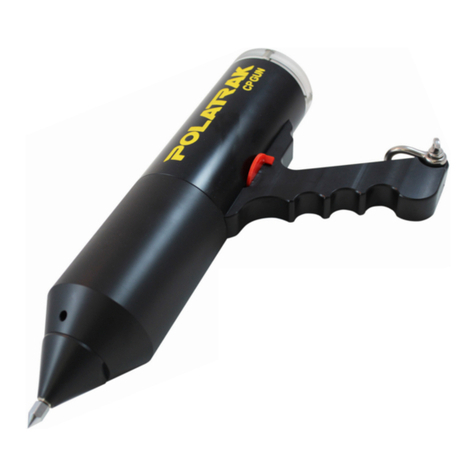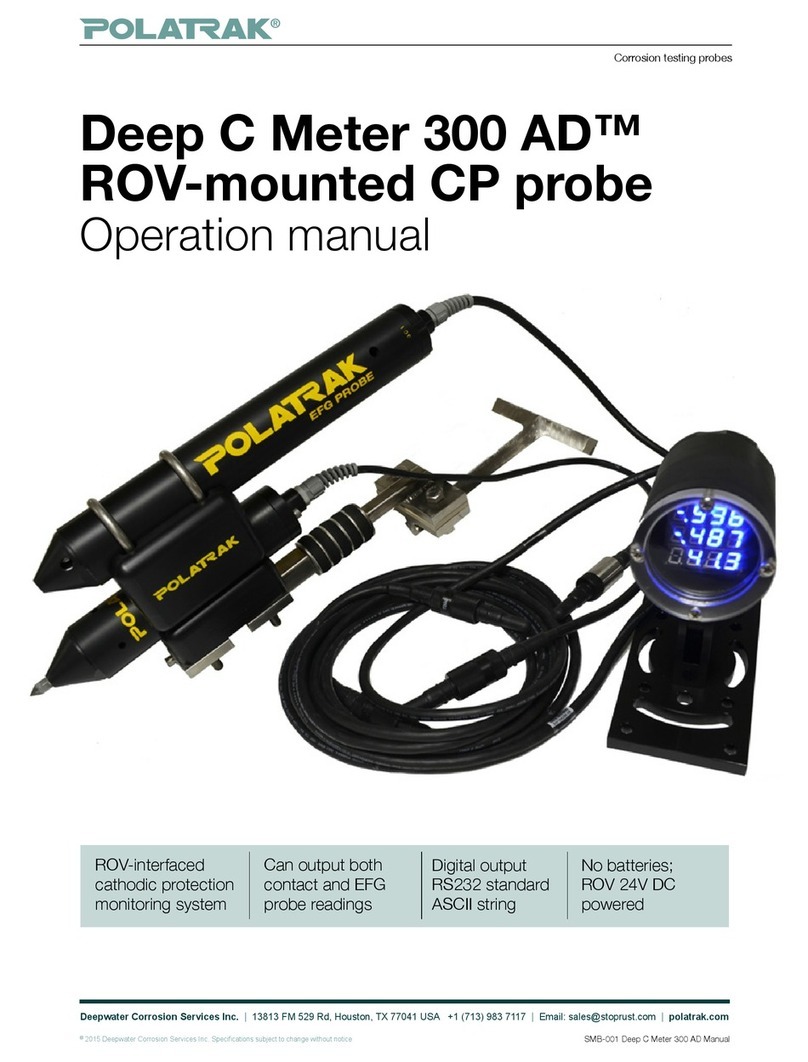
www.polatrak.com
13813 FM 529 Rd, Houston, TX 77041 | US +1 (713) 983 7117 | Email: sales@stoprust.com
©2023 Deepwater Corrosion Services Inc.
10SMB-006 Deep C Meter 3000 AD Manual Rev. 2
DEEP-C METER™ MANUAL
7.2. Bucket calibration check (Please see figure 7 on page 23)
Contact calibration check
7.2.1 Fill a clean, non-metallic bucket or container with seawa-
ter approximately 16 –18 inches deep. Ensure that the bucket has
been completely degreased and rinsed.
7.2.2 Place the probe in the bucket with the tip at an angle to ll
the body with seawater. The entire probe, including the tip, must
be immersed. Ensure there is no trapped air in the unit.
7.2.3 Attach or stab the zinc coupon rmly onto the probe tip. The
upper two display lines on the LED readout should read between
(-) 1.030V and (-) 1.070V and be within 0.005V of each other.
NOTE: If the probe has not been used in the past 24 hours, it
may take 15-30 minutes for the probe to reach equilibrium.
EFG™ calibration check (only applicable if using the EFG™ probe)
7.2.4 Ensure both sets of holes on the EFG™ probe are sub-
merged. Ensure there is no trapped air in the probe. If the bucket
is too short, remove the tail assembly and place the electrode
directly in the water.
7.2.5 The bottom display line should be less than ± 2 mV. If not,
one of the electrodes may need replacing.
7.2.6 Activate the zinc coupon by removing a small section of
oxide lm with a le or rasp.
7.2.7 Place the zinc coupon directly in front of the probe.
7.2.8 The bottom display line should become more negative.
7.2.9 Remove the zinc coupon. The bottom display line should
return to the original value in step 7.2.5.
7.3. Subsea calibrations
7.3.1 While approximately 30 feet away from surrounding struc-
tures / assets, stab the isolated zinc ROV calibration coupon with
the probe’s contact tip.
7.3.2 The upper two display lines on the readout should read be-
tween (-) 1.030V & (-) 1.070V and be within 0.010V of each other.
Make note of this difference for future readings.






























